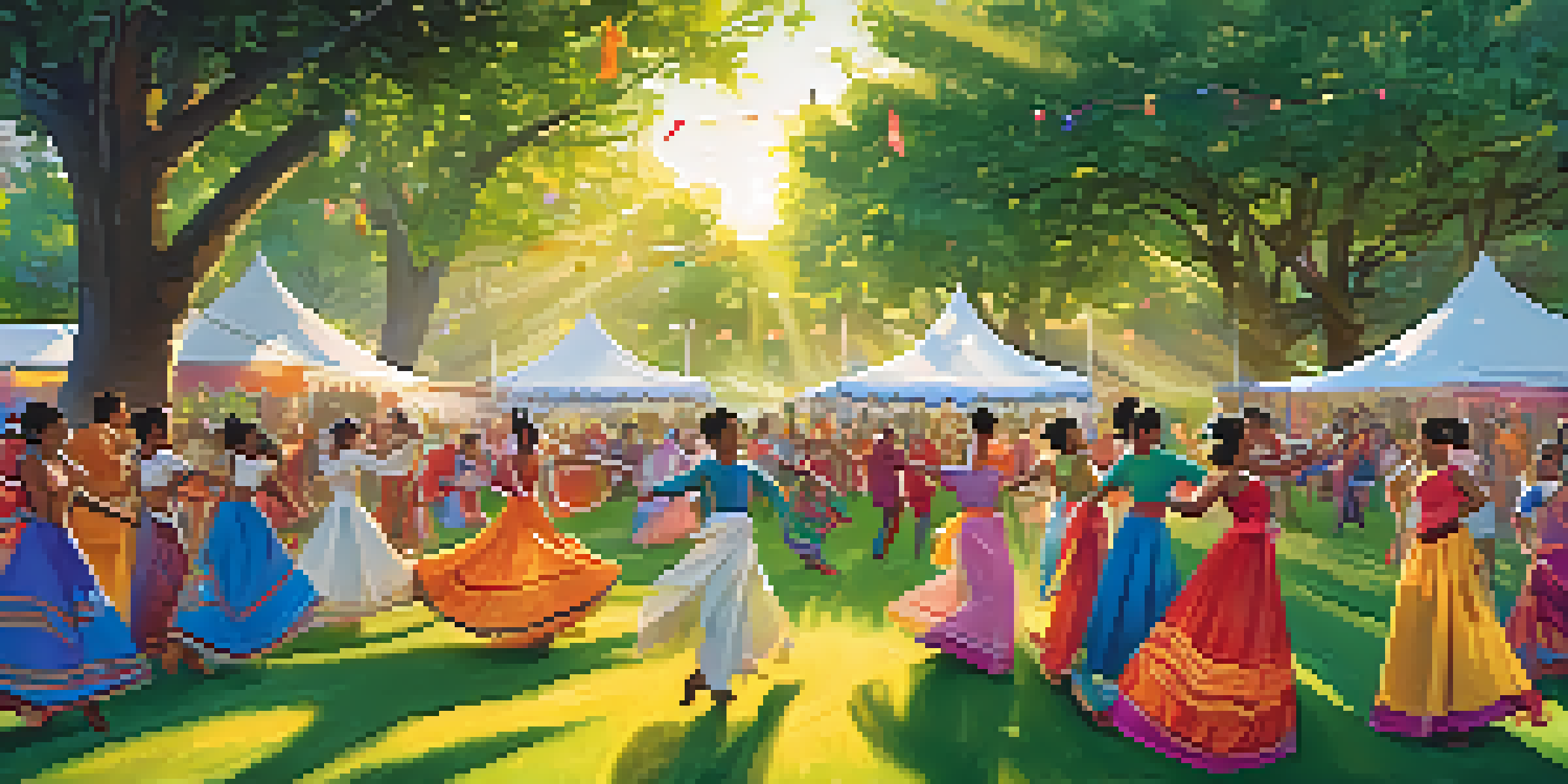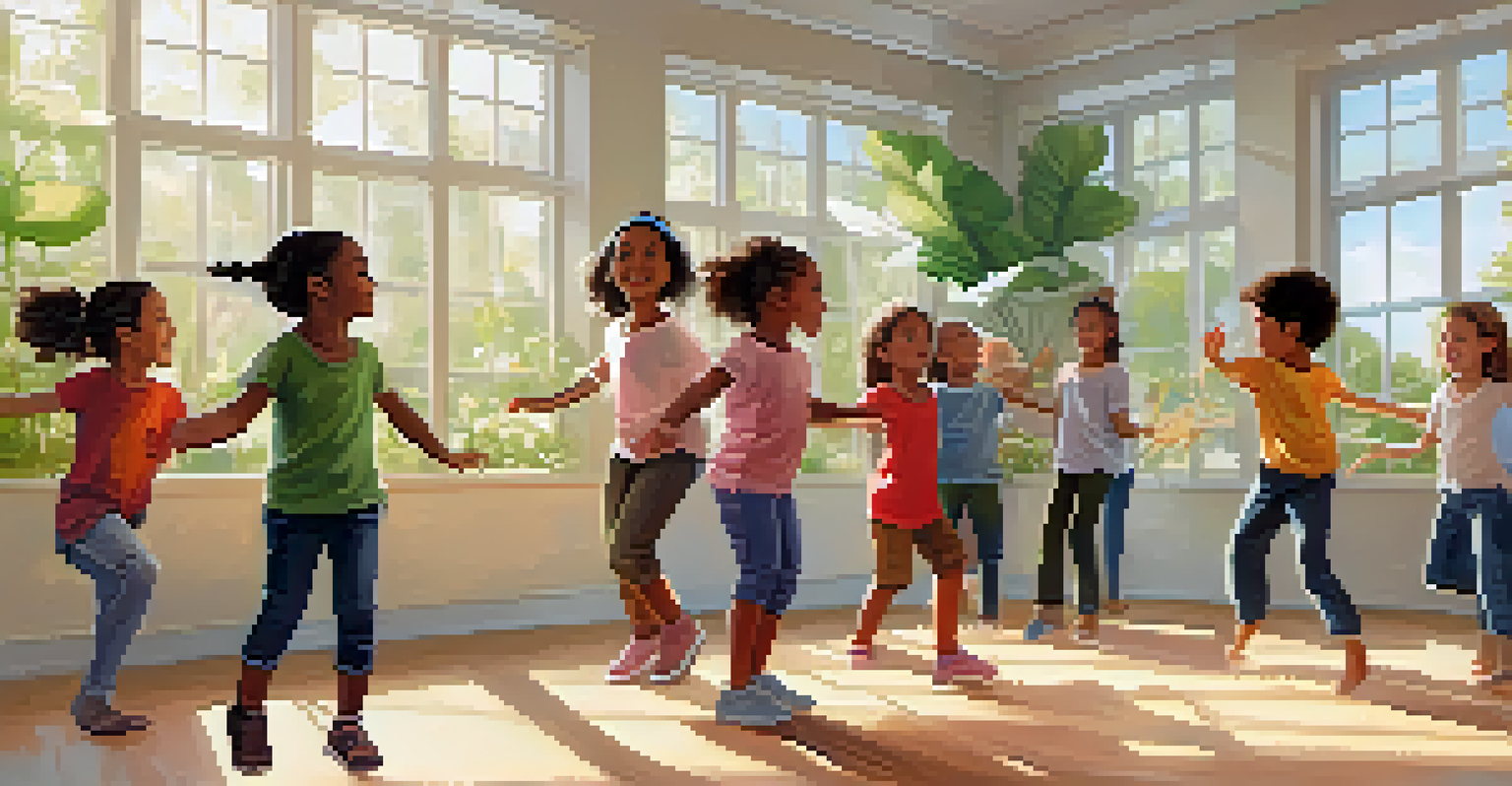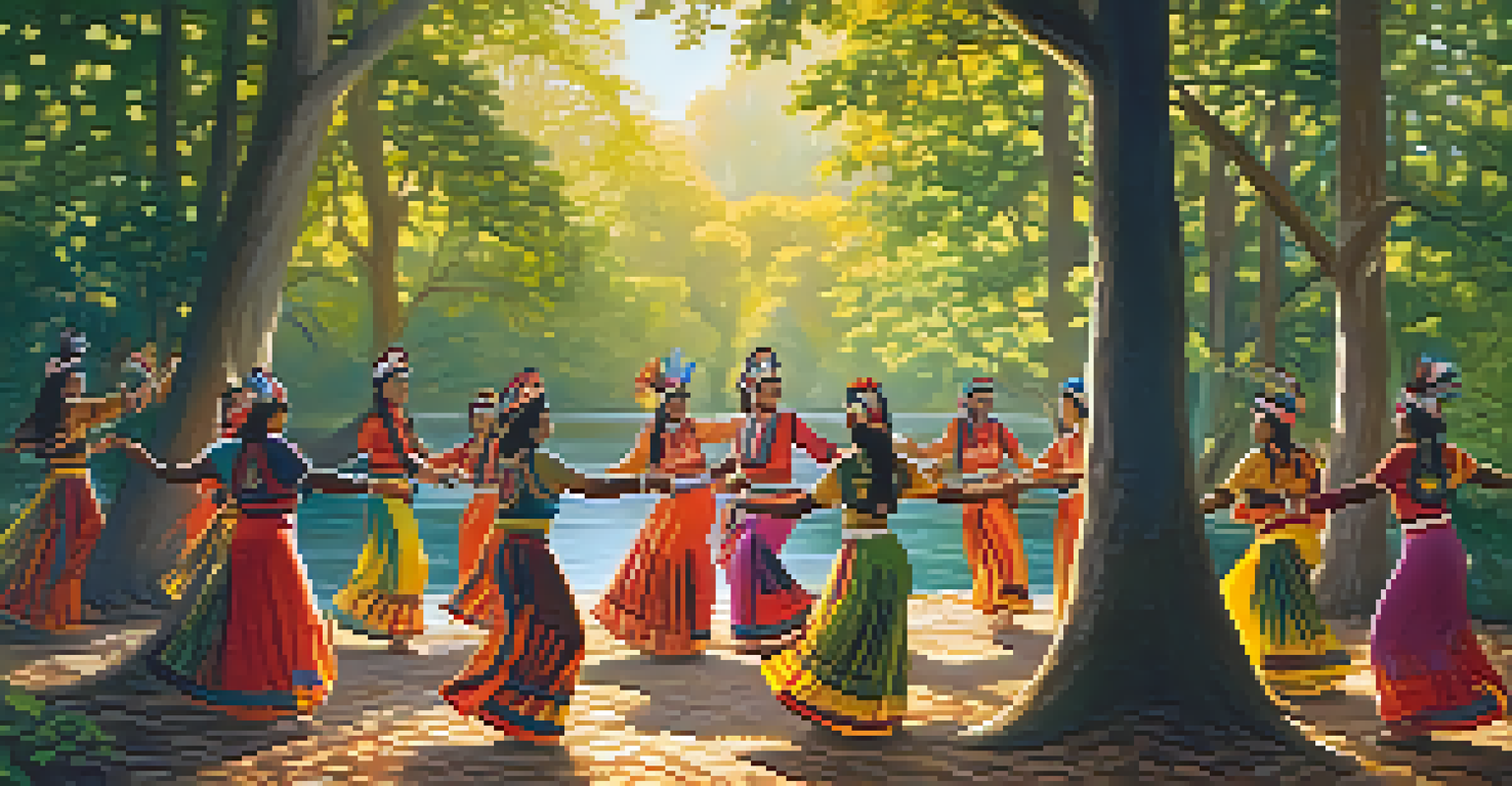The Role of Dance in Mobilizing Communities for Climate Action

Understanding the Connection Between Dance and Climate Action
Dance isn't just an art form; it's a powerful means of expression that can mobilize communities. When people dance together, they create a sense of unity and shared purpose, which is crucial for addressing climate change. This connection is increasingly recognized as communities turn to creative outlets to raise awareness and inspire action.
Dance is the hidden language of the soul.
By tapping into this communal spirit, dance becomes a tool for engagement. It allows individuals to express their feelings about climate change in a relatable way, making the issue more approachable. This artistic approach transforms complex environmental concerns into something tangible and immediate, encouraging people to get involved.
Moreover, dance can break down barriers. Whether through traditional folk dances or modern choreography, it invites diverse groups to come together, fostering collaboration. This inclusivity is vital for collective action against climate change, as everyone has a role to play in this global challenge.
Cultural Traditions: Dance as a Climate Narrative
Many cultures have integrated dance into their narratives about nature and the environment. Traditional dances often celebrate the earth, its cycles, and the importance of conservation. By reviving these dances, communities can reconnect with their heritage while promoting climate awareness.

For instance, indigenous dances often reflect a deep understanding of ecological balance and sustainability. Incorporating these practices into modern climate action initiatives helps honor cultural wisdom while addressing contemporary issues. This approach can foster a greater respect for the environment and inspire action rooted in cultural identity.
Dance unites communities for action
Through collective expression, dance fosters a sense of unity that mobilizes communities to address climate change.
Additionally, these cultural expressions can serve as a reminder of our shared responsibility to protect the planet. By weaving stories about climate action into dance, communities can inspire others to reflect on their relationship with nature. This narrative power is essential in mobilizing collective efforts towards sustainability.
Dance Festivals: Platforms for Climate Advocacy
Dance festivals have emerged as vibrant platforms for climate advocacy, drawing attention to urgent issues. These events not only celebrate creativity but also serve as a stage for raising awareness about climate change. Through performances, workshops, and discussions, they engage audiences in meaningful conversations.
Art must be an integral part of the solution to climate change.
For example, festivals can feature choreographies specifically designed to highlight environmental themes. These performances can evoke emotional responses, prompting attendees to consider their impact on the planet. By blending entertainment with education, dance festivals can inspire people to take action beyond the event itself.
Moreover, these gatherings often attract diverse audiences, creating opportunities for dialogue. Participants can share ideas, strategies, and solutions, fostering a sense of community around climate action. In this way, dance becomes a catalyst for change, encouraging collective responsibility.
The Role of Social Media in Dance and Climate Movements
In today's digital age, social media plays a crucial role in amplifying dance as a vehicle for climate action. Platforms like Instagram and TikTok allow dancers to share their message with global audiences, creating viral movements. This online visibility can spark conversations and inspire action far beyond local communities.
Dance challenges and campaigns can quickly mobilize people to participate and express their commitment to climate issues. For example, a dance challenge related to a specific climate action can encourage participants to share their videos while educating their followers. This blend of creativity and activism can reach a wider audience, making climate advocacy accessible and engaging.
Cultural dances promote climate awareness
Reviving traditional dances can connect communities to their heritage while encouraging respect for the environment.
Furthermore, social media can foster connections between like-minded individuals and organizations. Dancers and activists can collaborate, share resources, and support one another's initiatives. This network-building is essential for creating a robust movement that addresses climate change on multiple fronts.
Case Studies: Successful Dance Initiatives for Climate Action
Several successful initiatives showcase the effectiveness of dance in mobilizing communities for climate action. One notable example is the 'Dance for the Climate' campaign, which encouraged dancers worldwide to perform and share their routines while advocating for environmental causes. This initiative generated significant online engagement and raised awareness.
Another inspiring case is the 'Earth Dance' event, held in various locations globally, where participants unite to dance for peace and environmental protection. This event not only promotes community bonding but also highlights the urgency of climate action through the universal language of dance.
These case studies illustrate how dance can transcend cultural and geographical boundaries, creating a sense of global solidarity. By sharing these success stories, communities can inspire others to harness the power of dance in their own climate advocacy efforts.
Incorporating Dance into Climate Education Programs
Integrating dance into climate education programs can enhance engagement and understanding of environmental issues. Schools and organizations can use dance as a creative tool to teach students about sustainability, biodiversity, and climate change. This interactive approach can make complex topics more relatable and memorable.
For instance, workshops that combine dance and environmental education can encourage students to express their thoughts creatively. By choreographing routines that reflect their feelings about the planet, they can internalize these concepts in a fun and impactful way. This hands-on learning experience fosters a deeper connection to climate issues.
Social media amplifies dance advocacy
Platforms like Instagram and TikTok help dancers share climate messages globally, inspiring widespread engagement and action.
Additionally, incorporating dance into educational settings can promote teamwork and collaboration. Students working together to create a performance can develop important skills, such as communication and problem-solving. These collaborative efforts can inspire a sense of community and shared responsibility for the environment.
Future Directions: Dance as a Sustainable Movement
Looking ahead, the potential for dance in climate action is vast. As communities increasingly recognize the importance of creative expression, dance can play a pivotal role in shaping sustainable movements. By blending art and activism, we can inspire future generations to take climate action seriously.
Innovative collaborations between artists, scientists, and activists can help bridge the gap between creativity and environmental science. This interdisciplinary approach can lead to new ways of thinking about climate issues and inspire unique solutions. The fusion of dance and climate action can spark fresh ideas and energize communities.

Ultimately, the future of dance as a tool for mobilizing communities lies in its adaptability. By embracing new technologies, trends, and cultural influences, dance can continue to evolve as a means of raising awareness and inspiring action. As we move forward, the rhythm of dance can guide us toward a more sustainable future.